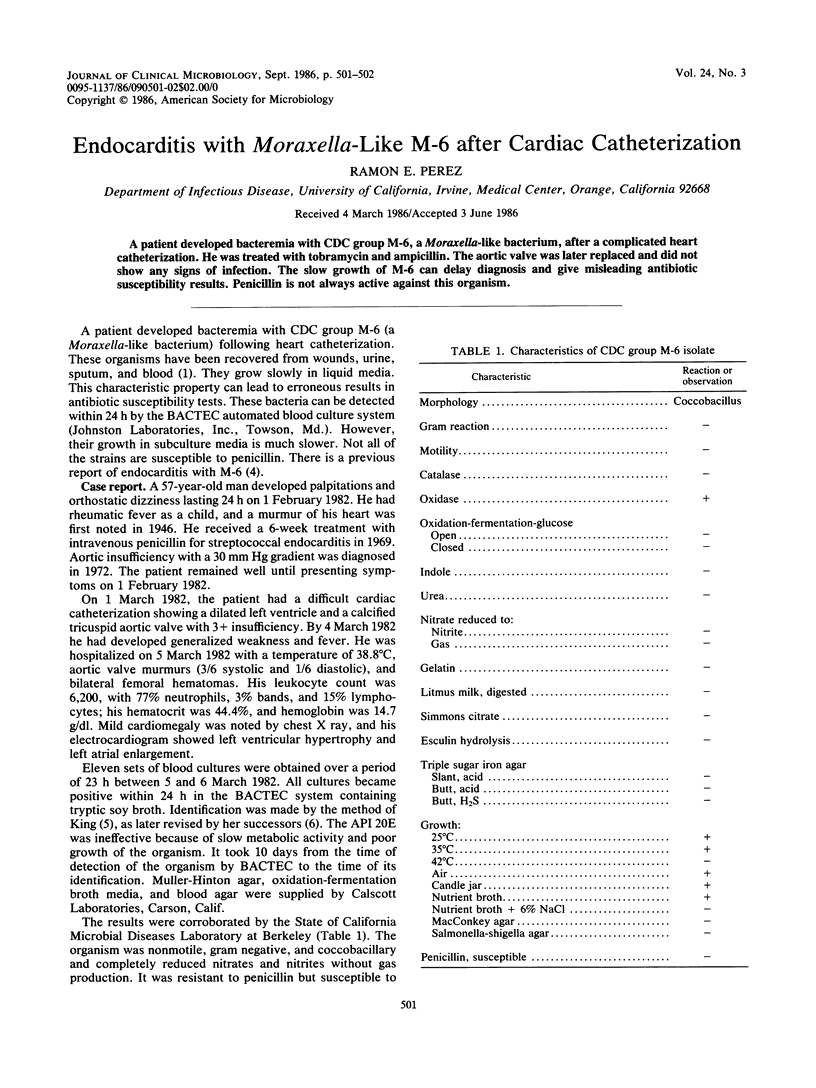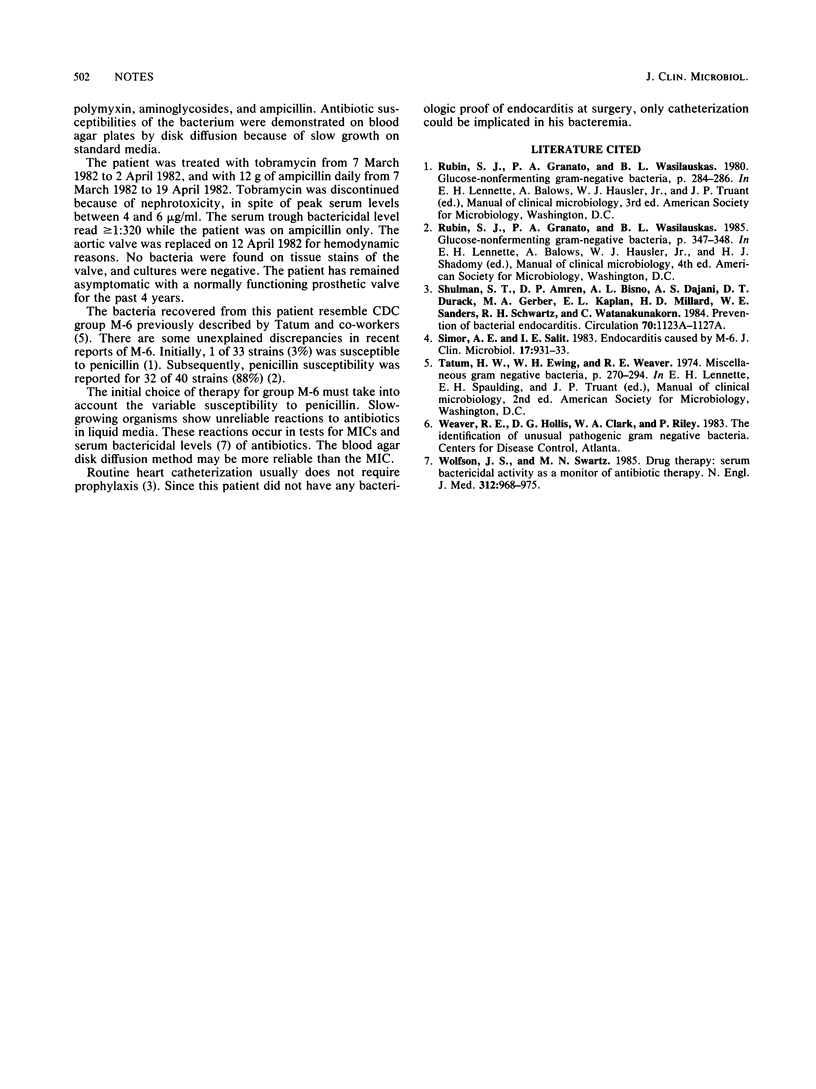Abstract
A patient developed bacteremia with CDC group M-6, a Moraxella-like bacterium, after a complicated heart catheterization. He was treated with tobramycin and ampicillin. The aortic valve was later replaced and did not show any signs of infection. The slow growth of M-6 can delay diagnosis and give misleading antibiotic susceptibility results. Penicillin is not always active against this organism.
Full text
PDF

Selected References
These references are in PubMed. This may not be the complete list of references from this article.
- Shulman S. T., Amren D. P., Bisno A. L., Dajani A. S., Durack D. T., Gerber M. A., Kaplan E. L., Millard H. D., Sanders W. E., Schwartz R. H. Prevention of Bacterial Endocarditis. A statement for health professionals by the Committee on Rheumatic Fever and Infective Endocarditis of the Council on Cardiovascular Disease in the Young. Circulation. 1984 Dec;70(6):1123A–1127A. [PubMed] [Google Scholar]
- Simor A. E., Salit I. E. Endocarditis caused by M6. J Clin Microbiol. 1983 May;17(5):931–933. doi: 10.1128/jcm.17.5.931-933.1983. [DOI] [PMC free article] [PubMed] [Google Scholar]
- Wolfson J. S., Swartz M. N. Drug therapy. Serum bactericidal activity as a monitor of antibiotic therapy. N Engl J Med. 1985 Apr 11;312(15):968–975. doi: 10.1056/NEJM198504113121507. [DOI] [PubMed] [Google Scholar]


